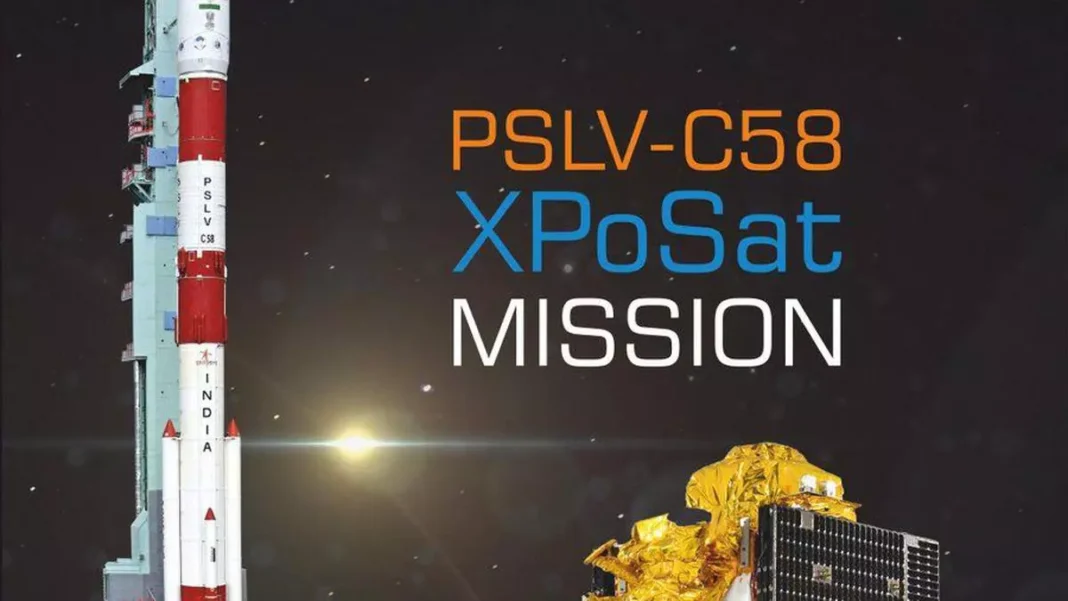By T E Raja Simhan Comments READ LATER A New Year gift to the world from India with the Indian Space Research Organisation (ISRO) successfully launched XPOSat (X-ray Polarimeter Satellite) on the first day of the year to help the scientific community globally look at the fundamental phenomena associated with the galaxy and the black holes. India becomes the second country after the US to join Imaging X-ray Polarimetry Explorer, with NASA launching one such satellite in December 2021. ISRO continued the successful run from where it left the previous year,, creating history with the launch of Chandrayaan-3, followed by the first solar mission – Aditya-L1, and the Gaganyaan Test Vehicle D1 mission.
It was yet another textbook launch through ISRO’s workhorse Polar Satellite Launch Vehicle (PSLV) DL (Dual Launch) on its 60th flight. The scientific mission will have an observation system to help astronomers and the scientific community look at fundamental phenomena associated with the galaxies and the black holes. After the launch, ISRO Chairman S Somnath from the control room said it was yet another successful mission of PSLV that was accomplished.
It placed the primary satellite XPoSat in the desired orbit at 650 km. ISRO’s PSLV-C58 Mission was launched XPoSAT into an Eastward low inclination orbit. After injection of the satellite, the PS4 sage was re-started twice to reduce the orbit into a 350 km circular orbit to maintain the 3-axis stabilised mode for Orbital Platform (OP) experiments.
The PSLV Orbital Experimental Module-3 experiment was executed, meeting the objective of 10 identified payloads supplied by ISRO and IN-SPACe. It carried two payloads – POLIX (Polarimeter Instrument in X-rays) and XSPECT (X-ray Spectroscopy and Timing). The POLIX is realised by Raman Research Institute, Bengaluru, and XSPECT is by Space Astronomy Group of UR Satellite Centre, Bengaluru, said ISRO.
XPoSAT was the first dedicated satellite from ISRO to carry out research in space-based polarisation measurements of X-ray emission from celestial sources. The mission aims to measure polarisation of X-rays in the energy band 8-30 keV emanating from about 50 potential cosmic sources through Thomson Scattering by POLIX payload. The mission’s scientific goals were to study the distribution of magnetic fields, geometric anisotropies, alignment about the line of sight, and the nature of accelerators in galactic cosmic X-ray sources by measuring the degree of polarisation and its angle.
It will undertake a detailed understanding of galactic black hole binary sources and study and confirm whether the production of X-rays is either from the polar cap of a neutron star or the outer cap of the pulsar magnetosphere. The launch was the 60th launch using ISRO’s workhorse – the Polar Satellite Launch Vehicle, India’s third-generation launch vehicle. After its first successful launch in October 1994, the PSLV emerged as India’s reliable and versatile workhorse launch vehicle.
Besides, the vehicle successfully launched two spacecrafts “Chandrayaan-1 in 2008 and Mars Orbiter Spacecraft in 2013, that later travelled to the Moon and Mars, respectively. Chandrayaan-1 and MOM were feathers in the hat of PSLV. The long string of consecutive successes and multi-satellite launch capability has reinforced the status of PSLV as a reliable, versatile and affordable launcher in the global market.
Comments.
From: thehindubusinessline
URL: https://www.thehindubusinessline.com/news/isro-rings-in-new-year-with-successful-launch-of-pslv-c58xposat-mission/article67694585.ece



